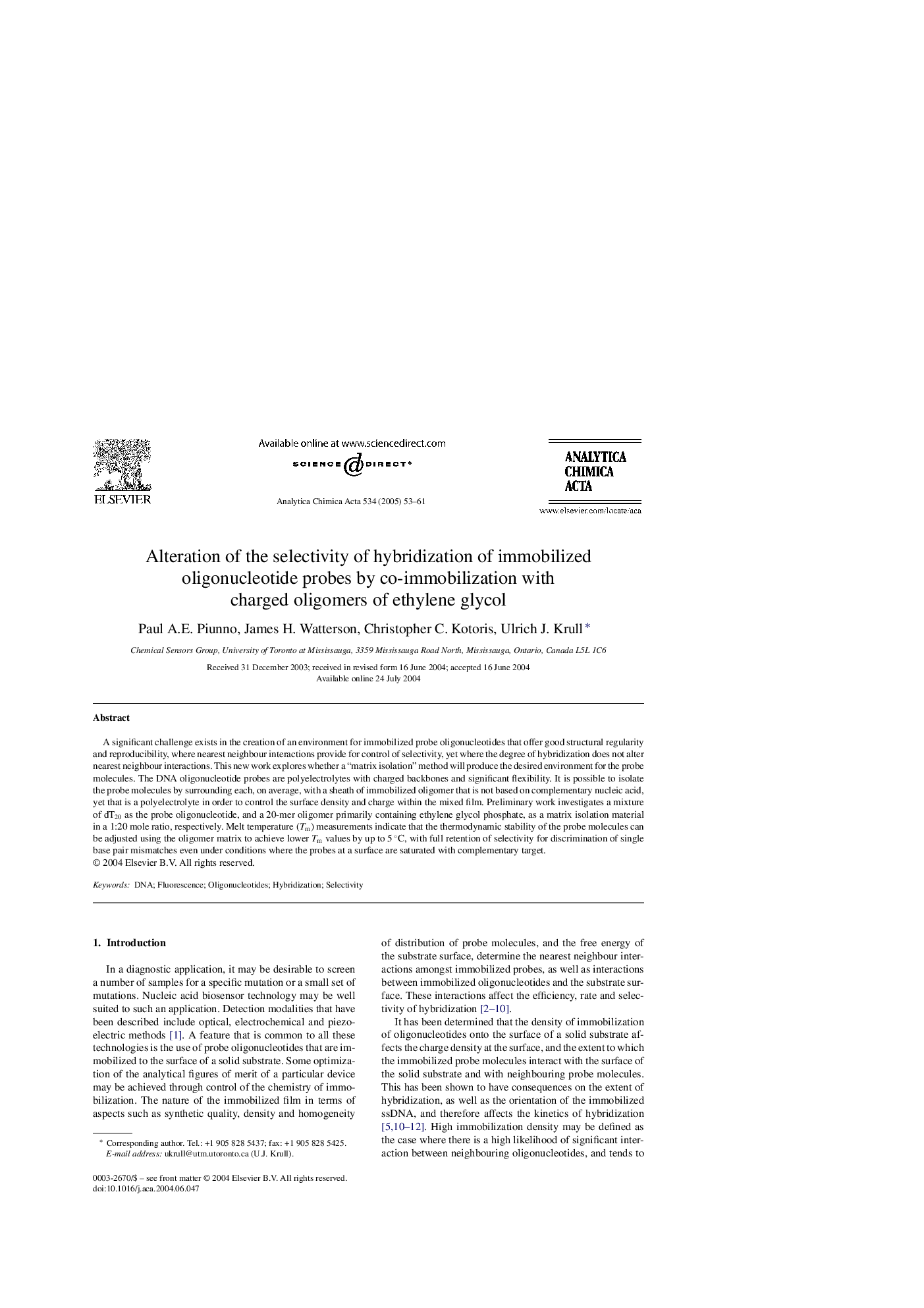| Article ID | Journal | Published Year | Pages | File Type |
|---|---|---|---|---|
| 10529317 | Analytica Chimica Acta | 2005 | 9 Pages |
Abstract
A significant challenge exists in the creation of an environment for immobilized probe oligonucleotides that offer good structural regularity and reproducibility, where nearest neighbour interactions provide for control of selectivity, yet where the degree of hybridization does not alter nearest neighbour interactions. This new work explores whether a “matrix isolation” method will produce the desired environment for the probe molecules. The DNA oligonucleotide probes are polyelectrolytes with charged backbones and significant flexibility. It is possible to isolate the probe molecules by surrounding each, on average, with a sheath of immobilized oligomer that is not based on complementary nucleic acid, yet that is a polyelectrolyte in order to control the surface density and charge within the mixed film. Preliminary work investigates a mixture of dT20 as the probe oligonucleotide, and a 20-mer oligomer primarily containing ethylene glycol phosphate, as a matrix isolation material in a 1:20 mole ratio, respectively. Melt temperature (Tm) measurements indicate that the thermodynamic stability of the probe molecules can be adjusted using the oligomer matrix to achieve lower Tm values by up to 5 °C, with full retention of selectivity for discrimination of single base pair mismatches even under conditions where the probes at a surface are saturated with complementary target.
Related Topics
Physical Sciences and Engineering
Chemistry
Analytical Chemistry
Authors
Paul A.E. Piunno, James H. Watterson, Christopher C. Kotoris, Ulrich J. Krull,
